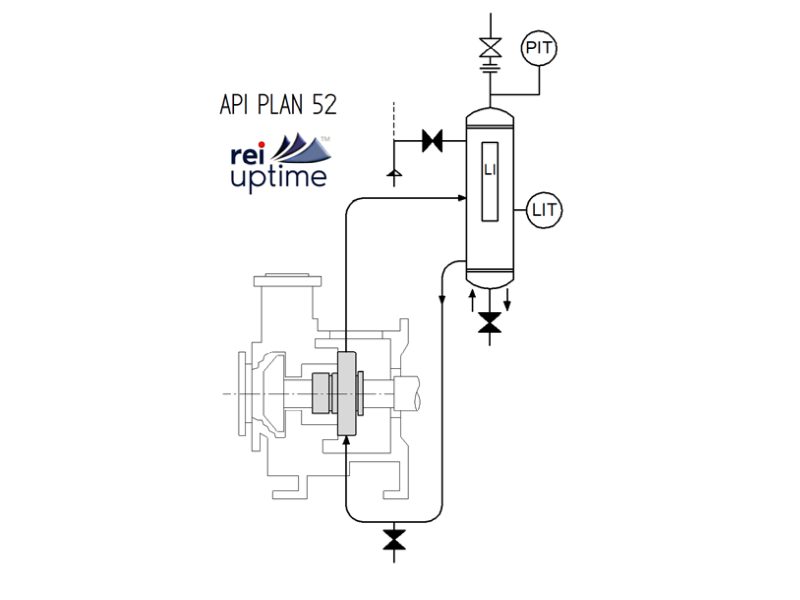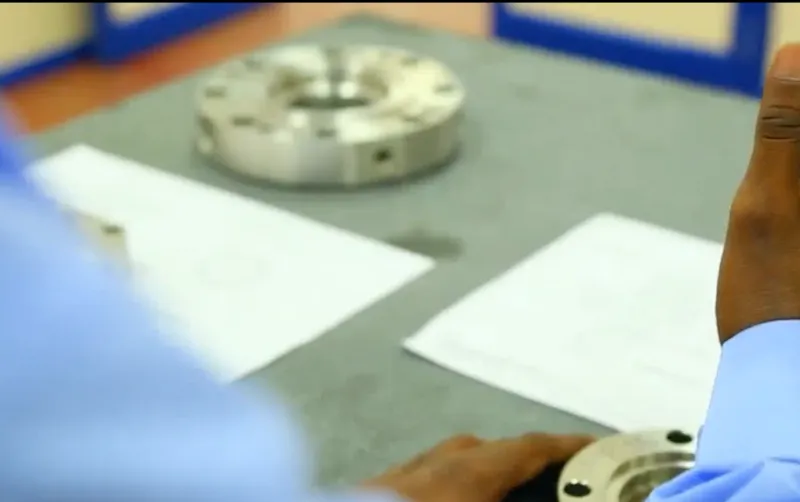

April 10, 2024
How Do Mechanical Seals Work?
Mechanical seals are devices used to prevent fluid leakage from rotating or reciprocating components in machinery, such as pumps, compressors, and mixers. They typically consist of two main components: a stationary part (often referred to as the stationary face) and a rotating part (referred to as the rotating face). These two seal faces along with a number of sealing devices such as gaskets and oring's, seal the process media inside the seal chamber of an item of rotating equipment, as shown below.

Here's how mechanical seals typically work:
Mechanical Seal Face Design
Contacting Surfaces: At the heart of a mechanical seal are two flat or slightly curved surfaces called seal faces. One of these faces is fixed to the stationary component of the machine (typically the pump housing), while the other is attached to rotary component of the machine (typically the rotating shaft). These faces come into counter-rotation contact with each other during operation.
Primary Sealing: When the machine operates, the rotating shaft causes one seal face to rotate while the other remains stationary. The close contact between the two faces creates a barrier that prevents the fluid from leaking out of the item of rotating equipment or machine. These seal faces are known as the primary seal of the mechanical sea, as shown below.

Fluid Film
The quality of the fluid film between the counter-rotational seal faces is THE most important factor in a mechanical seal design.
In the design of a single mechanical seal, the fluid film comprises of the process media.
In the design of a double mechanical seal, the fluid film comprises of the process media (in an API Plan 52 unpressurised buffer fluid application), or the secondary barrier fluid (in an API Plan 53 pressurised barrier fluid application).

If the fluid film is too LARGE, the seal faces will leak, as shown below.

If the fluid film is too SMALL, the seal faces will get hot, wear and become damaged. This also results is seal face leakage, as shown below.

The ideal, optimised fluid-film size is therefore critical to successful mechanical seal design and seal longevity.
What is the Optimum size of the Fluid Film in a Mechanical Seal?
The size of the fluid film in a mechanical seal can vary depending on several factors, including the design of the seal, the operating conditions, and the specific application. As a recap, the fluid film typically refers to the thin layer of fluid between the seal faces that helps to minimize friction, dissipate heat, and provide a barrier against leakage.
The thickness of the fluid film can range from a few micrometres (microns) to several hundred micrometres (microns), depending on several factors. A micrometre is a unit of length measuring one-millionth of a metre or one-thousandth of a millimetre (0.001mm). So 3 microns is 0.003mm (0.00012"). That's pretty small when you consider that a human hair diameter is typically 50-100 microns.
Factors effecting the fluid film thickness of a mechanical seal, include;
Operating Speed: Higher speeds may lead to thinner fluid films due to increased shear forces on the fluid.
Surface Finish: The smoothness and surface finish of the seal faces can affect the thickness of the fluid film. Finer finishes often result in thinner fluid films.
Fluid Properties: The viscosity and lubricating properties of the fluid used in the seal can influence the thickness of the fluid film. Higher viscosity fluids may result in thicker fluid films.
Operating Conditions: Temperature, pressure, and other environmental factors can also affect the thickness of the fluid film.
Typically, the thickness of the fluid film is carefully designed and controlled to ensure optimal performance of the mechanical seal, balancing the need for lubrication and heat dissipation with the requirement for effective sealing and minimal leakage.
Other Elements of the Mechanical Seal
Secondary Sealing: Alongside the primary sealing surfaces, mechanical seals incorporate secondary sealing elements to enhance sealing effectiveness. These may include O-rings, elastomer gaskets, or other types of dynamic or static sealing elements. These secondary seals help to maintain the integrity of the seal by preventing leakage through any gaps between the primary sealing surfaces.

Lubrication and Cooling: To reduce friction and wear between the seal faces, as well as to dissipate heat generated during operation, mechanical seals often require lubrication and cooling. This can be achieved through the use of a barrier fluid or a seal support system that supplies a compatible fluid to the seal faces.
Spring or Bellows: In many mechanical seals, a spring or bellows mechanism is incorporated to maintain the necessary contact force between the seal faces. This ensures that the seal remains effective under varying operating conditions, including changes in temperature and pressure.
Flush and Barrier Systems: In some applications, especially those involving hazardous or abrasive fluids, mechanical seals may be equipped with flush or barrier systems. These systems provide additional protection by supplying a clean fluid or gas to the seal faces, which helps to prevent product contamination and extend seal life.
Overall, mechanical seals work by maintaining a tight, controlled interface between rotating and stationary components, effectively preventing fluid leakage and ensuring the integrity and efficiency of rotating machinery in various industrial applications.
For further information, please contact Reliability Engineering and/or apply to attend one of our best practice sealing training courses.





